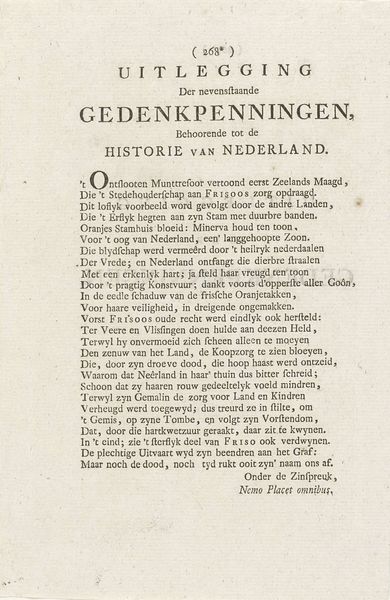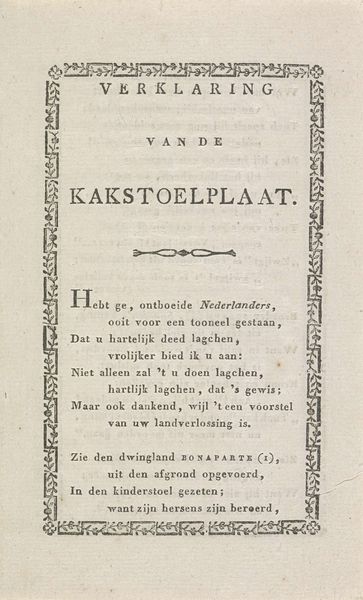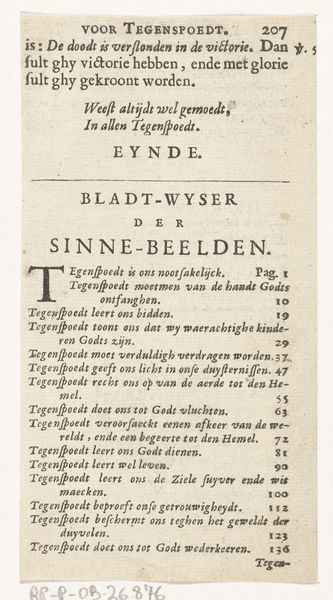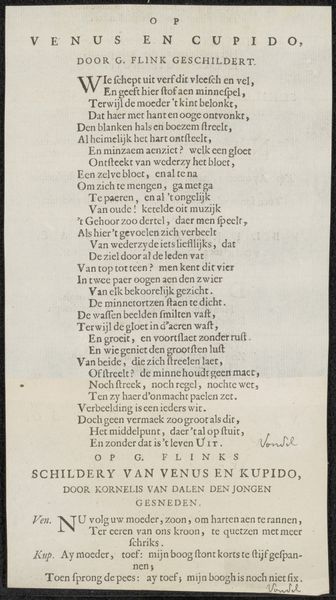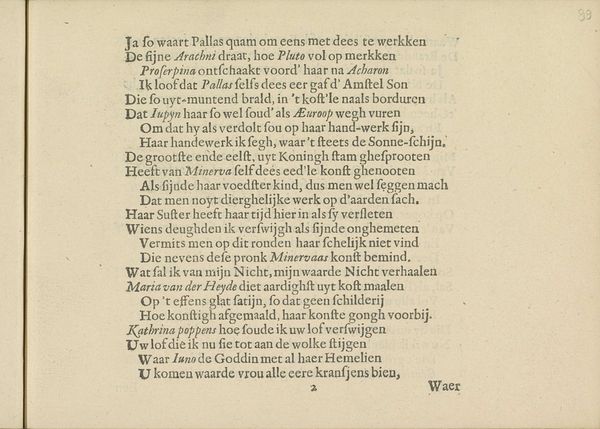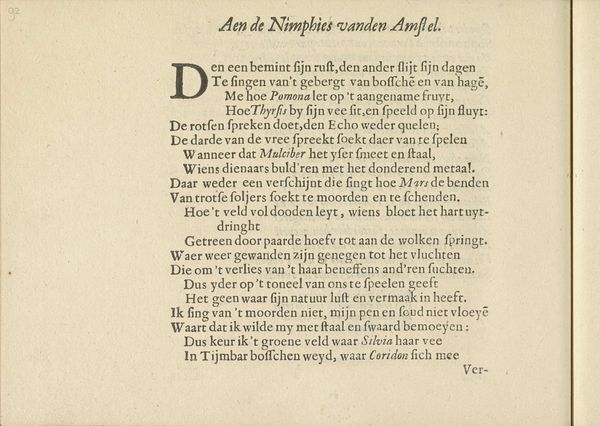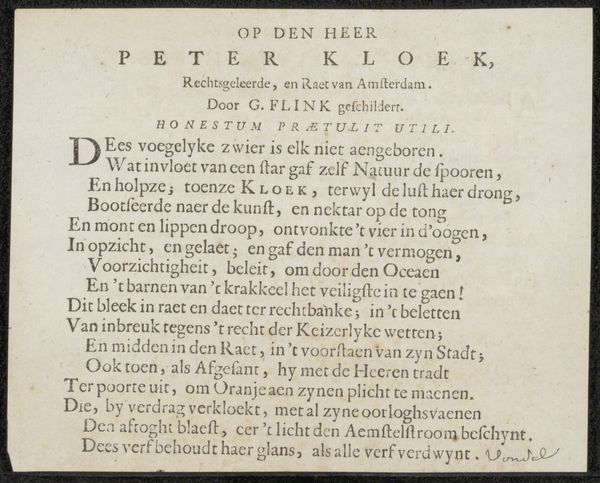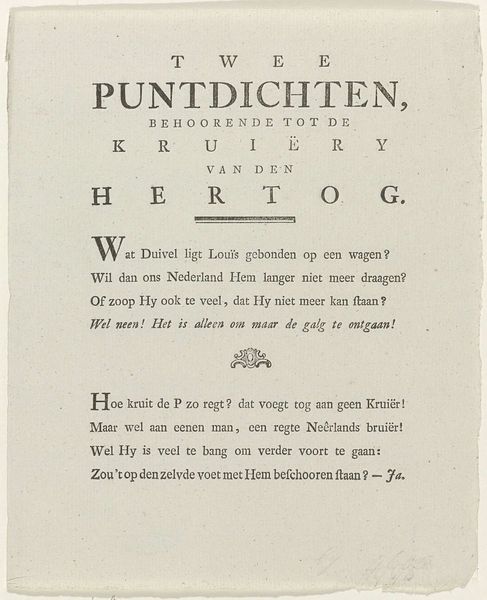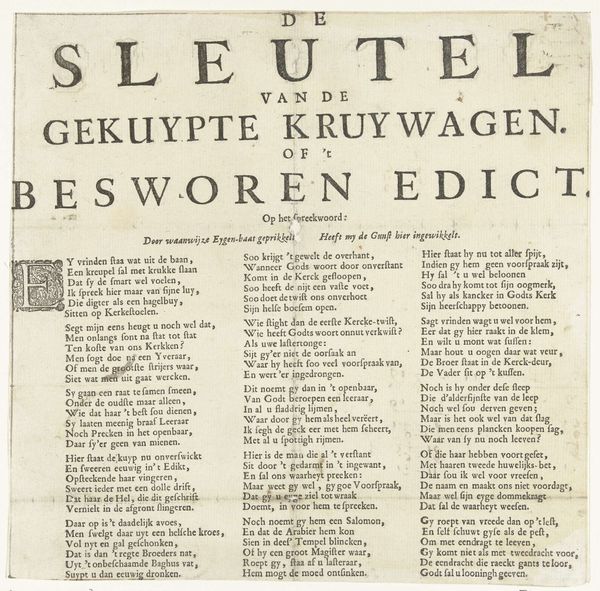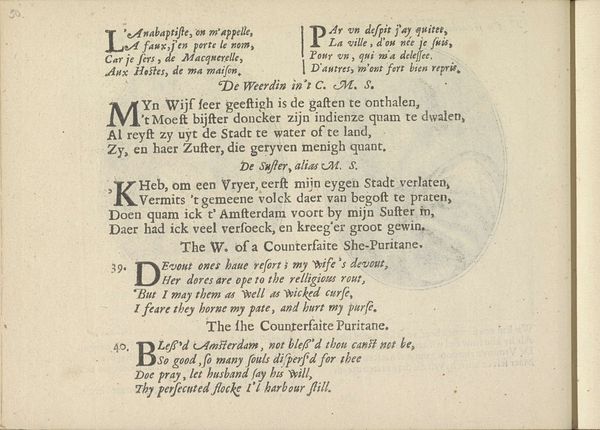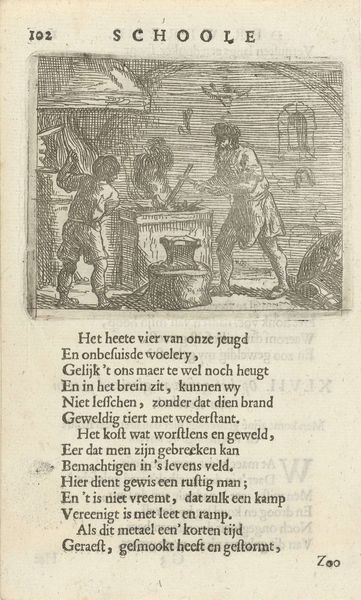
Verklaring van de allegorie op het afzetten van de acht overlieden van het Chirurgijnsgilde te Amsterdam, 1732 1732
0:00
0:00
graphic-art, print, typography, engraving
#
graphic-art
#
baroque
# print
#
typography
#
engraving
Dimensions: height 190 mm, width 130 mm
Copyright: Rijks Museum: Open Domain
Editor: We’re looking at "Explanation of the Allegory on the Deposition of the Eight Overlieden of the Surgeons' Guild in Amsterdam, 1732," an engraving from 1732. It’s all text, dense and a little intimidating. What can we unpack from this piece beyond just a historical record? Curator: Indeed, this isn't just informative; it's a powerful political statement disguised as descriptive text. How do you see it functioning as a form of social commentary in 18th-century Amsterdam, especially regarding the role and representation of surgeons? Editor: Well, the title suggests a power struggle within the Surgeons’ Guild. Was this a common occurrence, and what was the role of "overlieden?" Curator: Precisely. These overlieden were powerful figures within the Guild. This print highlights a moment of upheaval, likely reflecting tensions about power, accountability, and perhaps even access to the guild. Consider this engraving as a form of early "op-ed" – how might it sway public opinion or solidify a particular narrative? What tools does it deploy in these early forms of media? Editor: It seems accusatory, especially with phrases like "der snoode en eerelooze spreeken"—of foul and disgraceful speech. Was this kind of direct criticism typical for the time? Curator: Not necessarily. While criticism existed, the printing press allowed for a wider distribution of opinions, albeit still largely among the elite. This piece is not merely about surgical procedures; it’s about ethics, governance, and reputation within a specific professional group and more generally the civic sphere. Think of how identity, power and even morality is shaped by such cultural expressions. What assumptions can we make about the engraver's intentions and their target audience? Editor: This makes me see the print as more than just a record; it’s a piece of propaganda, even. I’m intrigued by how relevant these power dynamics still are today. Curator: Exactly. By recognizing this print’s inherent biases and political undertones, we’ve expanded our understanding beyond the surface to uncover layers of social dynamics, which invites contemporary intersectional thinking about identity, class and power structures.
